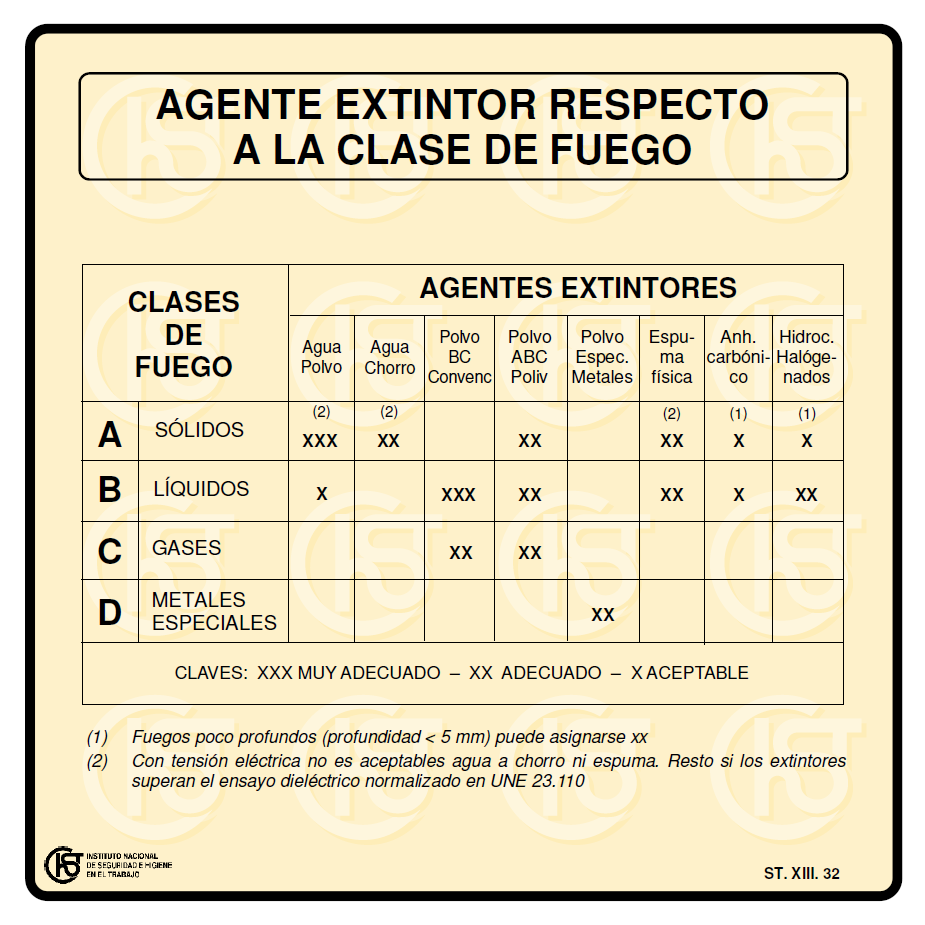In the event of fire
- Promptly report of the fire stituation to the caretaker’s office to notify it to the emergency crews and firefighters.
- Stay calm, do not run or scream. Do not use lifts.
- If the your clothes catch on fire, drop and roll.
- If there is a lot of smoke, crawl on your hands and knees and breathe through a damp cloth.
- Close the door when leaving the area. Do not take anything and never go back.
- If exits are blocked, stay in the area and put wet clothes in the doors’ grooves.
- Try to be seen through the window.
Prevention measures
- Order and cleanliness in workplaces.
- Extraction and ventilation in areas with explosive atmospheres.
- Order in storehouses with dangerous products and substances.
- Avoid the contact of combustible products with any possible ignition source (paper, boxes, etc.)
- Avoid the accumulation of waste, boxes, papers, etc.
- Cigarette's ends must be completely extinguished before throwing them to the waste bin.
- Keep properly the detection and extinction agents and indicate them correctly.
- Know and use correctly portable fire extinguishers.
- Keep free of obstacles the evacuation areas and routes.
- Follow the action guidelines established in the event of emergency such as sirens, signalling, evacuation routes, outdoors meeting points, etc.
Portable fire extinguishers
Warning:
Using a non-suitable fire extinguisher for the type of fire that must be extinguished, may aggravate the fire.
Steps to follow when using a portable fire extinguisher
- Verify that the fire extinguisher is appropriate for the type of fire to be extinguished.
- Take the fire extinguisher down.
- Verify that the fire extinguisher is in good condition.
- Unseal the fire extinguisher.
- Test it pointing to the floor.
- Get close to the fire with the wind behind you.
- Use the fire extinguisher in zig-zag in the base of the flames.
- Discharge completely the fire extinguisher.
- Leave while facing the fire.
- Verify the efficiency of the fire extinguisher.
- Make sure that it will be charged again.

Types of Fire:Type A
- Fire by solid combustibles that produce embers when burning, such as wood, paper, coal, fabrics, etc. Type A
- Fire by liquid or melted solid combustibles, such as petrol, fuel, oils, fats, asphalt, etc. Type B
- Fire by gaseous combustibles, as for example, acetylene, propane gas, butane, etc. Type C
- Fire by metal combustibles, such as sodium, potassium, pulverised aluminium, magnesium, titanium, zirconium, town gas, etc.Type D







